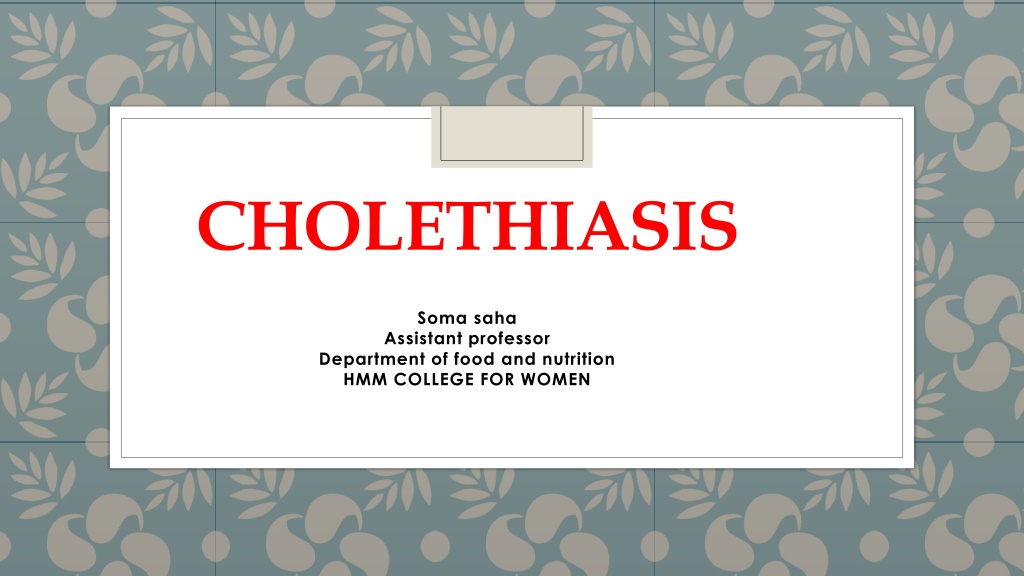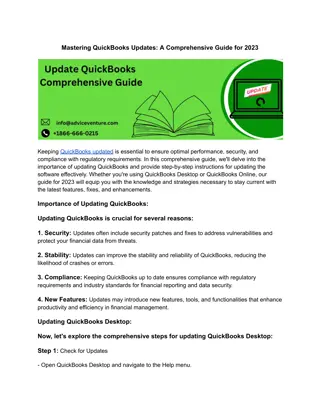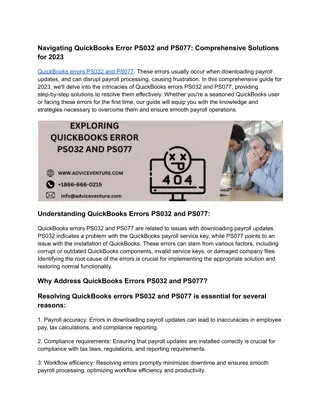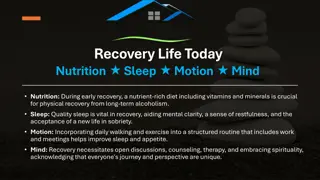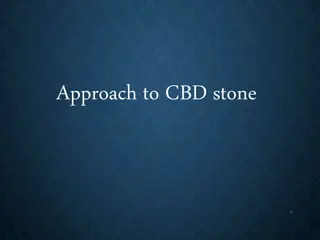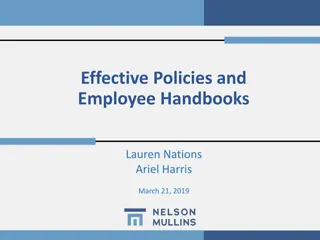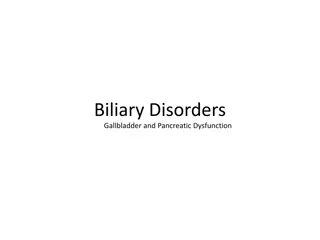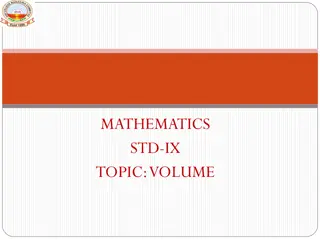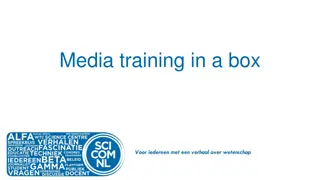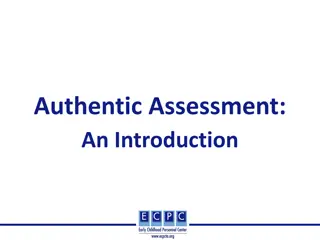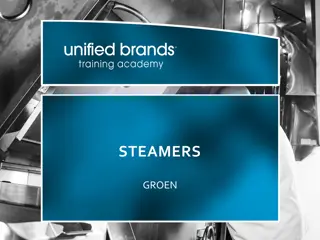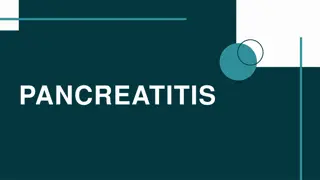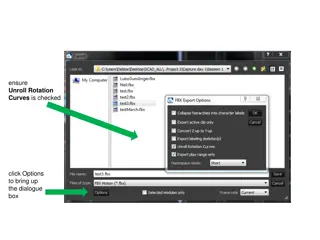Understanding Cholethiasis and Gallstones: A Comprehensive Guide
Bile, produced in the liver, helps in fat digestion and is composed of various substances. Bile acids are essential for digestion and are categorized as primary and secondary bile acids. The gallbladder stores and releases bile, aiding in fat digestion. Gallstones are solid materials that form in the gallbladder and can be cholesterol or pigment stones. Risk factors for gallstones include obesity and certain medical conditions. Knowing the types and causes of gallstones can help in prevention and management.
Download Presentation

Please find below an Image/Link to download the presentation.
The content on the website is provided AS IS for your information and personal use only. It may not be sold, licensed, or shared on other websites without obtaining consent from the author. Download presentation by click this link. If you encounter any issues during the download, it is possible that the publisher has removed the file from their server.
E N D
Presentation Transcript
CHOLETHIASIS Soma saha Assistant professor Department of food and nutrition HMM COLLEGE FOR WOMEN
WHAT IS BILE? A product secretion as well as excretion of liver. Mostly yellowish green in colour . Contains water, cholesterol, lecithin, fat, bile salt, bile pigments, inorganic salts. Doesn't contain any enzymes
Bile acids Bile acids are produced from cholesterol in hepatocyte Primary bile acids :- synthesised from cholesterol by endogenous enzymes in hepatocyte. More water soluble. a) Cholic acid b) Chenodeoxycholic acid Secondary bile acids :- synthesise from primary bile acids when enters into the intestine by the action of bacterial enzymes. Less water solouble. a) Deoxycholic acid b) Lithocolic acid
Blie salts Sodium taurocholate Sodium glychocolate
Gall bladder FUNCTIONS Structure of gall bladder Gallbladder stores and releases bile, a fluid made in your liver, to help in fat digestion by emulsification. CCK contracts gall bladder as fat enters into small intestine. Then spincter of ODII opens and bile from gallbladder inter into the small intestine through common bile duct.
What is gall stones? Gallstones are pieces of solid material that form in your gallbladder, a small organ under your liver.
Gall stone types Cholesterol stone Pigment stones Made primarily of cholesterol (<70%) Yellowish green in colour. Large Often solitary Occurs due to increased con of cholesterol. Risk factors :-4F = female, forty,fertile, fat Made of bilirubin and calcium salt. Dark in colour Small and irregular. Less then 20% cholesterol. Risk factors :- haemolysis, liver cirrhosis, sickle cell anaemia
Causes they might happen when: There s too much cholesterol in your bile. Your body needs bile for digestion. It usually dissolves cholesterol. But when it can t do that, the extra cholesterol might form stones. There s too much bilirubin in your bile. Conditions like cirrhosis, infections, and blood disorders can cause your liver to make too much bilirubin. Your gallbladder doesn t empty all the way. This can make your bile very concentrated. Incomplete emptying, stagnation of bile. High intake of fat for a long time.
Risk factors Rapid weight loss through severe calorie restriction- bilary sludge Obesity Female Increased age Fasting Excessive consumption of fatty acids Contraceptive pills as it contains high levels of oestrogen. Alteration in bile salt metabolism.
cholecystitis Inflamation of gall bladder .usually caused by gall stones obstructing the bile duct. wall becomes inflamed, distended, infection can occurs. Acute cholecystitis :- can occur s without stones in critically ill patients or due to biliary sludge. Severe pain, nausea, vomiting, jaundice, fever. Chronic cholecystitis :- appears due to decreased spontaneous contractile activity of the gall bladder and decreased contractile responsiveness to the hormone CCK
SYMPTOMS Symptoms may include: Pain in your upper belly, often on the right, just under your ribs Pain in your right shoulder or back An upset stomach Vomiting Other digestive problems, including indigestion, heartburn, and gas See your doctor or go to the hospital if you have signs of a serious infection or inflammation: Belly pain that lasts several hours Fever and chills Yellow skin or eyes Dark urine and light-colored poop
COMPLICATIONS Gallstones can cause serious problems, including: Gallbladder inflammation (acute cholecystitis). This happens when a stone blocks your gallbladder so it can t empty. It causes constant pain and fever. Your gallbladder might burst, or rupture, if you don t get treatment right away. Blocked bile ducts. This can cause fever, chills, and yellowing of your skin and eyes (jaundice). If a stone blocks the duct to your pancreas, that organ may become inflamed (pancreatitis). Infected bile ducts (acute cholangitis). A blocked duct is more likely to get infected. If the bacteria spread to your bloodstream, they can cause a dangerous condition called sepsis. Gallbladder cancer. It s rare, but gallstones raise your risk of this kind of cancer.
DIAGNOSIS Doctor will do a physical exam and might order tests including: Blood tests. These check for signs of infection or blockage, and rule out other conditions. Ultrasound. This makes images of the inside of your body. CT scan. Specialized X-rays let your doctor see inside your body, including your gallbladder. Magnetic resonance cholangiopancreatography (MRCP). This test uses a magnetic field and pulses of radio wave energy to make pictures of the inside of your body, including your liver and gallbladder. Cholescintigraphy (HIDA scan). This test can check whether your gallbladder squeezes correctly. Your doctor injects a harmless radioactive material that makes its way to the organ. A technician can then watch its movement. Endoscopic retrograde cholangiopancreatography (ERCP). Your doctor runs a tube called an endoscope through your mouth down to your small intestine. They inject a dye so they can see your bile ducts on a camera in the endoscope. They can often take out any gallstones that have moved into the ducts. Endoscopic ultrasound. This test combines ultrasound and endoscopy to look for gallstones. SOURCE:-https://www.webmd.com/
TREATMENT Laparoscopic cholecystectomy. This is the most common surgery for gallstones. Your doctor passes a narrow tube called a laparoscope into your belly through a small cut. It holds instruments, a light, and a camera. They take out your gallbladder through another small cut. You ll usually go home the same day. Open cholecystectomy. Your doctor makes bigger cuts in your belly to remove your gallbladder. You ll stay in the hospital for a few days afterward. If gallstones are in your bile ducts, your doctor may use ERCP to find and remove them before or during surgery. If you have another medical condition and your doctor thinks you shouldn't have surgery, they might give you medication instead. Chenodiol (Chenodol) and ursodiol (Actigall, Urso 250, Urso Forte) dissolve cholesterol stones. They can cause mild diarrhea. You may have to take the medicine for years to totally dissolve the stones
Preventing Gallstones Some lifestyle changes might lower your risk of gallstones. Eat a healthy diet that's high in fiber and good fats, like fish oil and olive oil. Avoid refined carbs, sugar, and unhealthy fats. Get regular exercise. Aim for at least 30 minutes, 5 days a week. Avoid diets that make you lose a lot of weight in a short time. If you re a woman at high risk of gallstones (for example, because of your family history or another health condition), talk to your doctor about whether you should avoid the use of hormonal birth control.
DIETARY PRINCIPLES LOW CALORIE Normal carbohydrate with low simple su MODERATE PROTEIN MAINLY VEG PROTEIN RESTRICTED FAT AND FAT CONTAINING FOOD. VIT MINERAL SUPPLEMENTATION. ADEQUATE WATER INTAKE. SIMPLE DIET.
